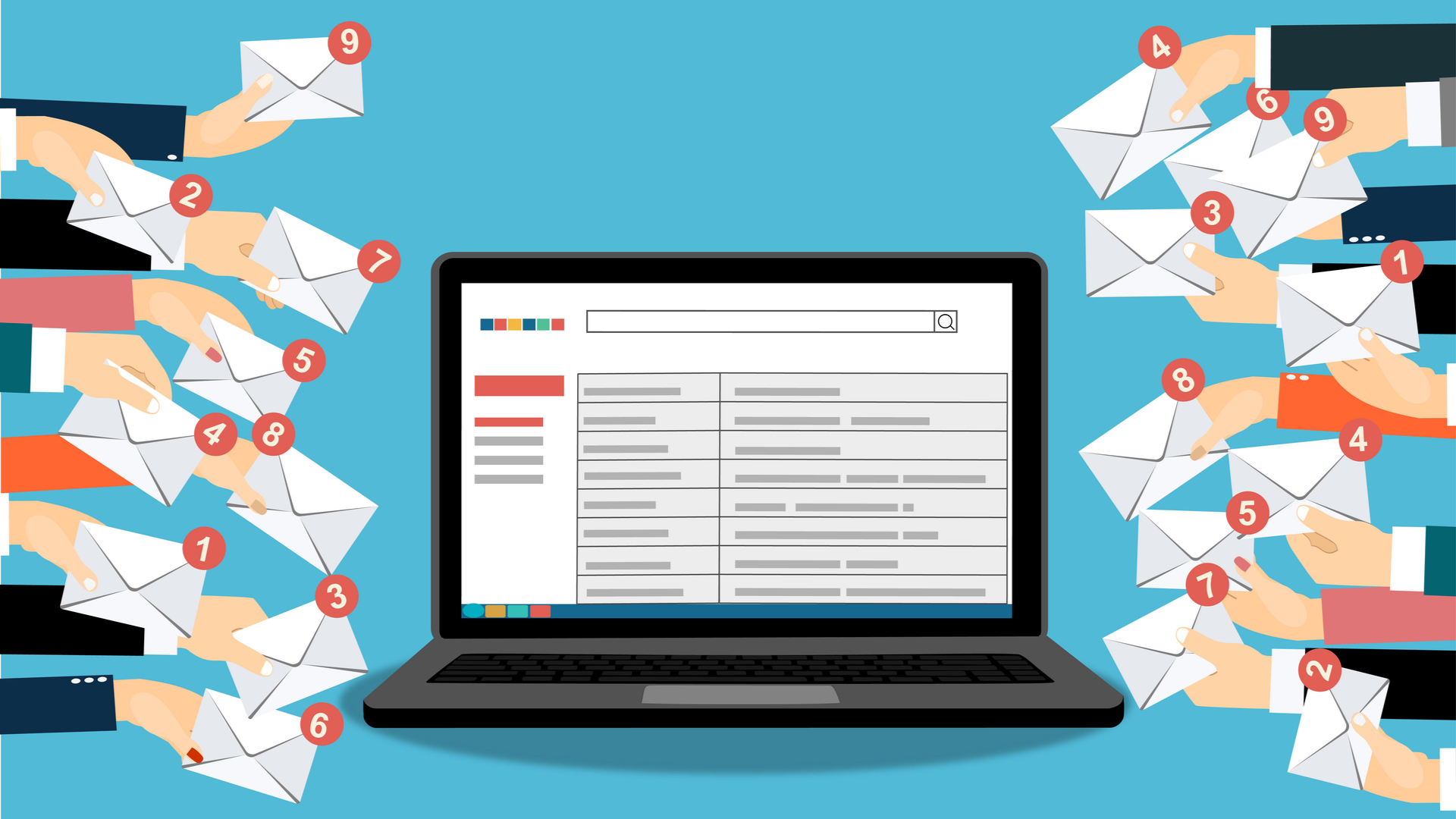Why reply all is a silent threat to modern business
Email has been a mainstay in business operations for decades, but reply-all messages pose a multi-faceted danger

Email forms a critical part of modern business operations, with this technology so prevalent that some individuals have multiple email accounts. Its ubiquitous nature, however, also makes it dangerous, with accidental reply-all messages potentially damaging business productivity and grinding IT systems to a halt. These email storms can even inadvertently replicate the effects of distributed denial of service (DDoS) attacks.
One of the reasons reply all storms pose such a risk is they’re so easy to execute, and a simple reply-all message to a multi-recipient email can accidentally disrupt an entire organisation. Reply all also places a significant load on servers, with demand for resources rising substantially depending on the number of recipients, as well as the number, and size, of attachments. “Data storage can be filled with surprising rapidity when a user sends a large document, especially one containing video media or similar, to multiple recipients locally,” explains Gary Smith, a customer services engineer for Capita.
Lina Siegl, a PhD researcher with the University of Manchester, also notes that reply all can disrupt productivity. “Even if it only takes you five minutes to pick up your thought where you left off, if this happens six times a day, you’ve lost 30 minutes a day,” Siegl says. “That means you probably spend over a day each month wasting time just looking at unnecessary email traffic.”
The perfect storm
A classic example of reply all causing an email storm was when a test email was sent to 840,000 NHS accounts in November 2016. This resulted in 186 million emails being sent as various recipients responded – also using reply all. The subsequent statement by the NHS had to be issued over the phone, as their email system had ground to a halt, according to BBC News.
Not only are the largest organisations at risk, however, but relatively smaller businesses too. For example, IT consultant Chris Clemson recalls an incident in which somebody sent a Christmas card to everyone in a company with several thousand mailboxes. “The email itself had an 8MB bitmap image file in it,” he says. “Then, people started replying saying “please don't send this”, while still including the 8MB picture, which exacerbated the problem. The only real damage it caused was poor performance for a day, some admin, and more helpdesk calls, but it showed how easy it is to make the problem worse.”
Another danger is inadvertently leaking data through a reply-all message to multiple recipients. Not only can this violate GDPR, but confidential and sensitive information may be shared. “Even the most honest business deal can be irreparably damaged if internal discussions and opinions are accidentally leaked to a business partner as if they were company policy,” Smith explains.
RELATED RESOURCE

2021 state of email security report: Ransomware on the rise
Securing the enterprise in the COVID world
Such an incident occurred when a mother and child were moved to new accommodation to escape domestic abuse. Because the accused was representing himself in court, he was exchanging emails with solicitors and the court. He received, through a reply-all chain, an unredacted statement that included the mother’s new address. This isn’t the only example, however, with the Independent similarly reporting that family courts were putting domestic abuse victims at risk by sharing their addresses with abusive ex-partners.
Get the ITPro daily newsletter
Sign up today and you will receive a free copy of our Future Focus 2025 report - the leading guidance on AI, cybersecurity and other IT challenges as per 700+ senior executives
Technological solutions for a human problem
One obvious mitigation is for organisations to block reply-all functionality entirely using information rights management (IRM) tools, which have been available for years. IRM, however, requires administrative efforts to properly manage. “Active Directory (AD) allows the creation of permission groups, which become the basis for email policies,” explains freelance network administrator, Peter Gatehouse. “It isn’t a lot of extra work unless there’s a mass reorganisation; it's more creating a policy and allocating the respective groups.”
Alternatively, should organisations wish to retain the option of using reply all when required, there are various add-ons for your app of choice that allow the original sender to decide whether recipients can use reply-all messages. There’s also Microsoft’s Reply All Storm Protection tool, launched in May, which is intended for larger organisations using Office 365 or Exchange Online. This tool blocks all subsequent replies to an email thread for four hours once it detects ten reply-all emails to more than 5,000 recipients within the space of an hour. It still allows for some strain to be placed on the server, but far less than if it weren’t there.
One of the key challenges is developing a solution compatible with multiple email clients. While all applications essentially operate in the same way, they don’t fully integrate with one other. Although an organisation may have strict email policies in place, too, external parties may not, unless it’s been pre-agreed in a contract.
Embedded attachments within reply-all messages, meanwhile, produce additional strain. They can be mitigated by blocking attachments and requiring internal staff to use collaborative platforms, or smart email systems. “Smart email systems recognise that the same file is going to everyone, and they cache a single copy on the server,” explains Gatehouse. “This can, however, still cause a flood of network traffic, if many people attempt to access a large attachment within a short timeframe.”
Life after email
Some people go so far as to shut down their email applications to avoid being distracted, but this means they could miss urgent information. Some recipients also use filters or rules to prioritise emails in which they’re addressed in the To field rather than CC or BCC fields. Senders of reply-all emails, therefore, need to be aware that any important information in their reply may be missed.
Reply all is, ultimately, a human problem and whilst technological solutions exist to mitigate the problem, only a cultural shift in how we approach online communications will resolve it. One solution is training staff in the best ways of using email, such as encouraging staff to use mailing lists, as well as using appropriate communications platforms and collaborative tools for sharing information.
“If you want to send a message, where everybody can collaboratively speak about an issue, there’s a better format than reply all on an email chain,” Siegl says, adding you could create a group on communications platforms such as Teams and Slack, among a host of others.
Ultimately, reply all is a global problem, and little can be done to stop receiving reply-all emails from external parties. Nonetheless, with the appropriate safeguards and training in place, the worst effects of an email storm can be mitigated.
-
 Bigger salaries, more burnout: Is the CISO role in crisis?
Bigger salaries, more burnout: Is the CISO role in crisis?In-depth CISOs are more stressed than ever before – but why is this and what can be done?
By Kate O'Flaherty Published
-
 Cheap cyber crime kits can be bought on the dark web for less than $25
Cheap cyber crime kits can be bought on the dark web for less than $25News Research from NordVPN shows phishing kits are now widely available on the dark web and via messaging apps like Telegram, and are often selling for less than $25.
By Emma Woollacott Published
-
 'Digital hide-and-seek': Workers are wasting hundreds of hours a year sourcing the information they need to carry out their role
'Digital hide-and-seek': Workers are wasting hundreds of hours a year sourcing the information they need to carry out their roleNews Knowledge workers globally are wasting a quarter of their working week tracking down information, new research from Atlassian has revealed.
By George Fitzmaurice Published
-
 Untethered: How CIOs and CISOs are paving the way for the new hybrid workforce
Untethered: How CIOs and CISOs are paving the way for the new hybrid workforceWhitepaper Effective techniques to transition from exposed legacy infrastructure to an effective zero trust strategy
By ITPro Published
-
 Better together
Better togetherWhitepaper Achieve more with Windows 11 and Surface
By ITPro Published
-
 Transforming the enterprise
Transforming the enterpriseWhitepaper With Intel and CDW
By ITPro Published
-
 Unlocking the power of your digital services
Unlocking the power of your digital servicesSponsored Businesses have invested significant cash into technology since COVID-19, but are they really getting their money's worth?
By ITPro Published
-
 Delivering fast and secure digital experiences for the modern hybrid workforce
Delivering fast and secure digital experiences for the modern hybrid workforceWhitepaper A new approach to digital experience monitoring that can monitor the health of all systems
By ITPro Published
-
 Collaboration is the glue that holds your business together
Collaboration is the glue that holds your business togetherSPONSORED A combination of productivity tools and cloud telephony can enable the best from your workforce
By ITPro Published
-
 The future of work and the forgotten workforce
The future of work and the forgotten workforcewhitepaper How to deploy a mobile-first strategy so no one gets left behind
By ITPro Published